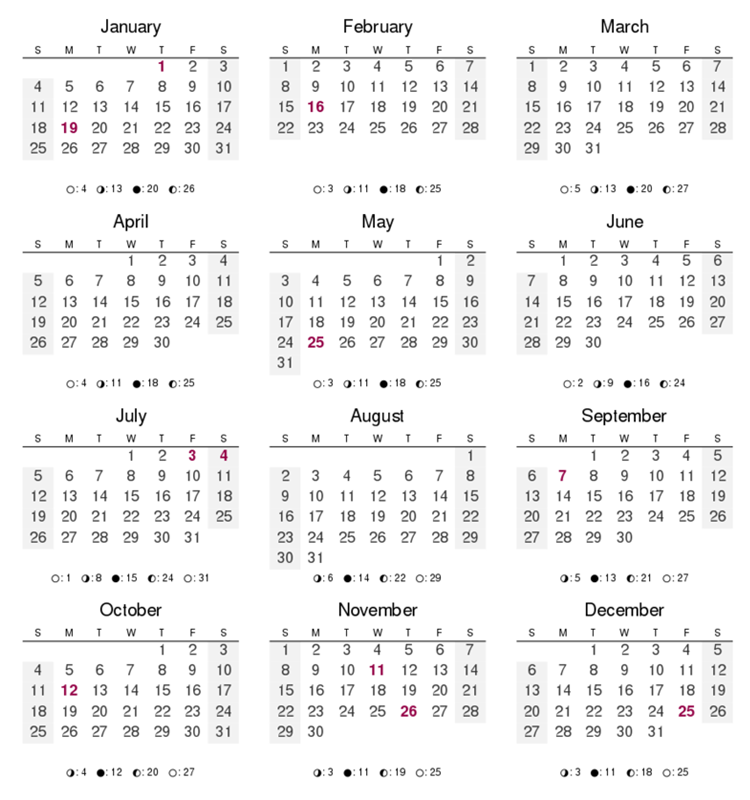A year has 365 days divided into 12 months in the modern day Gregorian calendar. Each month has either 28, 30 or 31 days during the common year.

Nearly every 4 years is a Leap Year with 366 days because we add an extra (intercalary) day at the end ofFebruary, the Leap Day on 29 February.
From 10 to 12 months
The Gregorian calendar and its' predecessor, the Julian calendar both consist of 12 months. The even earlierRoman calendar also had 12 months, but only 10 of the months had names.
Calendar with holidays worldwide
Tracking the Moon's orbit
The months of the year originated as a way to mark time and break up the seasons into shorter periods based on the Moon’s orbit around the Earth. Months were first used and invented in Mesopotamia to measure the natural period related to the cycle of the moon.
The addition of January and February moved the months September, October, November andDecember to no longer correspond with the original meaning of their names. In the Roman Calendar their original names in Latin mean the “seventh”, “eighth”, “ninth”, and “tenth” month.
There are many calendars that use months to divide up the year, like the Islamic calendar, the Hebrew calendar, and the Hindu calendar to just name a few. Although the Gregorian calendar is the most commonly used calendar today, other calendars are still used to calculate certain holidays and annual feasts to correspond with the Gregorian calendar.
Old names of months
Months in the ancient Roman calendar include:
- Mercedonius - an occasional month after February that would be used to realign the Roman calendar. Today we use Leap Day for this alignment.
- Quintilis - renamed July in honor of Julius Caesar in 44 BCE.
- Sextilis - renamed August in honor of Roman Emporor Augustus in 8 BCE.
How many have 28, 30 or 31 days?
The Gregorian calendar has four months with a length of 30 days and seven months that are 31 days long. February is the only month that is 28 days long in common years and 29 days long in leap years.
The 12 Months of the Year
The Gregorian calendar and the Julian calendar both consist of the following twelve months:

